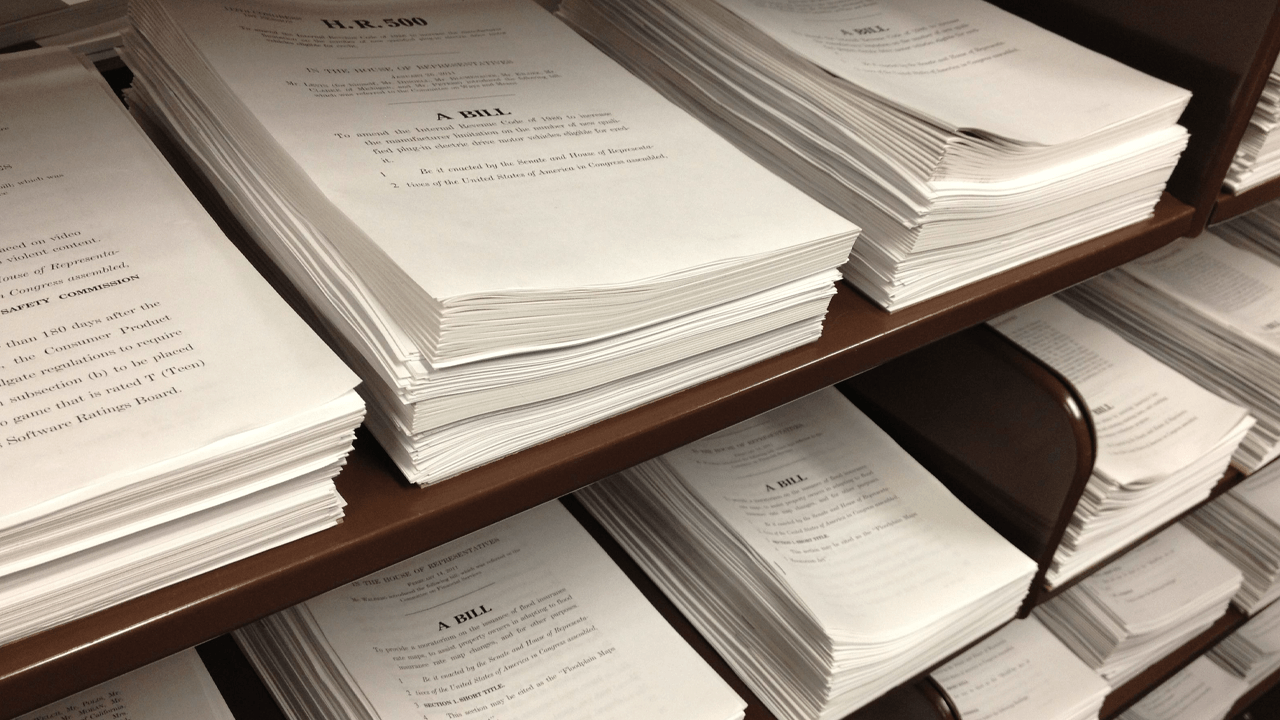The passage of President Trump’s “Big, Beautiful Bill” through the House and Senate represents a defining moment in his administration, sparking intense debate and scrutiny. Supporters celebrate it as a transformative achievement, while critics warn of its potential to destabilize the nation’s fiscal health. The bill’s journey—marked by fierce political battles, significant policy shifts, and uncertain economic consequences—demands a closer examination.
A Contentious Birth: Navigating Republican Divisions
The road to passing the “Big, Beautiful Bill” was fraught with challenges, despite Republicans holding majorities in both chambers of Congress. Internal divisions within the party threatened to derail the legislation, as lawmakers clashed over its fiscal implications, healthcare provisions, and energy policies. Fiscal conservatives raised alarms about the bill’s projected impact on the national debt, citing estimates from the Congressional Budget Office (CBO) that it could add trillions of dollars to the debt over the next decade. This concern was compounded by proposed cuts to Medicaid, which drew opposition from moderate Republicans worried about the bill’s impact on low-income Americans. Additionally, the bill’s energy provisions—particularly its push for expanded domestic oil, coal, and natural gas production—sparked debate amid growing climate concerns.
To secure passage, President Trump and Republican leaders engaged in intense negotiations, offering concessions on certain provisions while emphasizing the bill’s potential economic benefits. House Speaker Mike Johnson framed the legislation as a victory for the American people, urging Republicans to unite behind it. The political maneuvering underscored the delicate balance between ideological purity and legislative pragmatism, revealing the challenges of governing with a narrow majority.
Key Provisions: A Sweeping Overhaul of Domestic Policy
The “Big, Beautiful Bill” is a sweeping piece of legislation that touches nearly every aspect of domestic policy. Its most notable provisions include:
- Tax Cuts: The bill includes substantial tax reductions for both individuals and corporations, designed to stimulate economic growth by increasing disposable income and business investment.
- Increased Spending: The legislation allocates additional funds for immigration enforcement, military expansion, and infrastructure projects, reflecting the Trump administration’s priorities.
- Medicaid Cuts: The bill proposes significant reductions in Medicaid spending, aiming to curb government expenditures while raising concerns about healthcare access for vulnerable populations.
- Energy Policy: The bill promotes the expansion of domestic fossil fuel production, aiming to reduce reliance on foreign energy sources and create jobs in the energy sector.
- Debt Ceiling: To avoid a federal default, the bill raises the debt ceiling by $5 trillion, allowing the government to continue meeting its financial obligations.
These provisions reflect a broader ideological shift in fiscal policy, prioritizing deregulation, tax cuts, and reduced government spending in certain areas. However, the bill’s long-term effects remain uncertain, with debates continuing over its potential to spur economic growth or deepen fiscal instability.
Economic Impact: A Storm of Uncertainty
The economic consequences of the “Big, Beautiful Bill” are a subject of fierce debate. Proponents argue that the tax cuts and increased spending will stimulate job creation, boost wages, and encourage business expansion. They point to historical precedents where tax cuts have led to economic growth, suggesting that the bill could have a similar effect. However, critics warn that the bill’s policies could exacerbate income inequality, increase the national debt, and trigger inflation. The Medicaid cuts, in particular, are seen as a potential burden on low-income families, while the debt ceiling increase raises concerns about long-term fiscal sustainability.
Independent analyses of the bill’s economic impact have yielded mixed results. Some studies suggest modest economic growth, while others predict significant negative consequences, including higher interest rates and reduced economic stability. The actual outcome will depend on various factors, including the Federal Reserve’s monetary policy, global economic conditions, and the response of businesses and consumers to the policy changes. The uncertainty surrounding these factors makes it difficult to predict the bill’s long-term effects with certainty.
A Legacy in the Making: More Than Just Numbers
Beyond its immediate economic effects, the “Big, Beautiful Bill” is poised to leave a lasting imprint on American society and politics. It represents a significant shift in fiscal policy, with potential consequences that could extend far into the future. The bill also highlights the deep divisions within the Republican Party, revealing the challenges of governing with a narrow majority and balancing competing ideological priorities.
The passage of the bill is a testament to President Trump’s ability to rally his party behind his agenda, even in the face of strong opposition. It demonstrates the power of Republican leadership to overcome internal divisions and push through major legislation. However, the long-term consequences of the bill remain uncertain, and its legacy will likely be debated for years to come. Whether it proves to be a catalyst for prosperity or a harbinger of fiscal crisis will depend on how the economy responds to these policy changes and how future generations address the challenges they create.
Conclusion: A Crossroads for the American Future
The “Big, Beautiful Bill” is more than just a piece of legislation; it is a reflection of the competing visions for America’s future. It represents a bet that tax cuts and deregulation will unleash economic growth, while critics fear it will exacerbate inequality and burden future generations with debt. The bill’s passage marks a pivotal moment in American politics, one that will shape the nation’s fiscal and social landscape for decades. Whether it proves to be a catalyst for prosperity or a cautionary tale of political ambition and economic miscalculation remains to be seen. Only time will tell if this “Big, Beautiful Bill” truly lives up to its name or if it becomes a symbol of the challenges of governing in a divided political climate.





